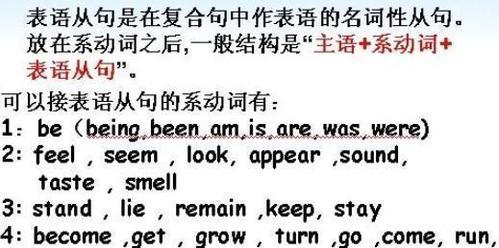在英语语法中,主语后可以添加宾语、定语或状语以丰富句子的意义。宾语用于表达主语在做什么,定语用于进一步描述主语,状语用于描述主语的状态或行为。灵活运用这些语法知识可以使语言更加地道和流畅。

1. 宾语
当我们想要表达主语在做什么时,可以在主语后加上宾语。例如:
- I love [my job].
- She is eating [an apple].
- They bought [a new car].
在这些例子中,主语是“I”、“She”和“They”,宾语分别是“my job”、“an apple”和“a new car”。
2. 定语
有时候,我们需要在主语后加上定语来进一步描述主语。例如:
- The [old man] walked slowly.
- The [red car] is mine.
- The [happy children] played in the park.
在这些例子中,主语是“the man”、“the car”和“the children”,定语分别是“old”、“red”和“happy”。
3. 状语
我们可以在主语后加上状语来描述主语的状态或行为。例如:
- She sings [beautifully].
- They work [hard every day].
- He talks [loudly on the phone].
在这些例子中,主语是“She”、“They”和“He”,状语分别是“beautifully”、“hard every day”和“loudly on the phone”。

